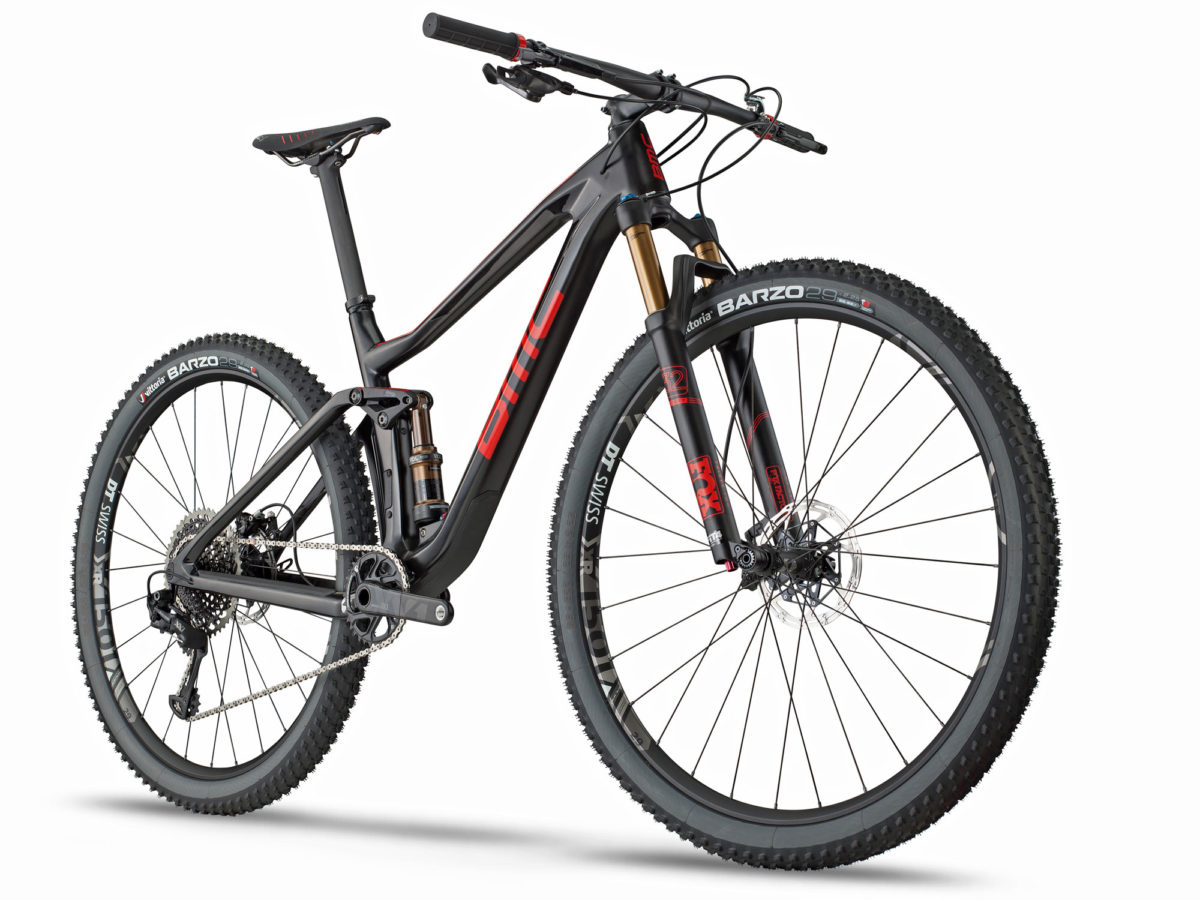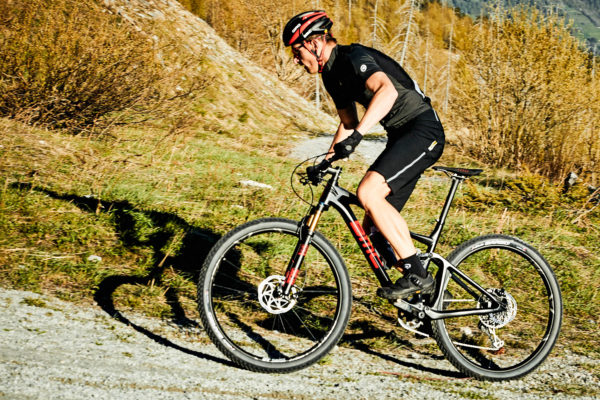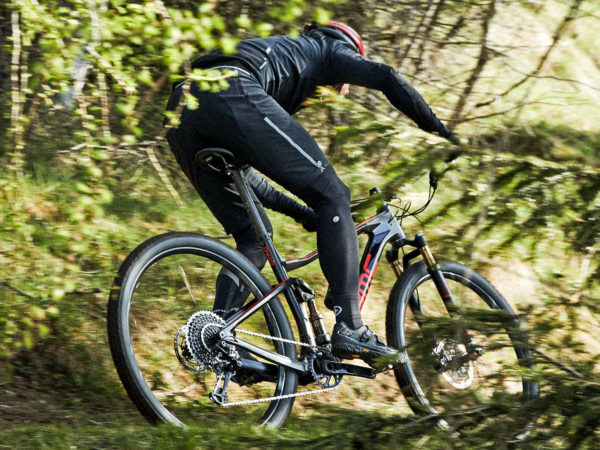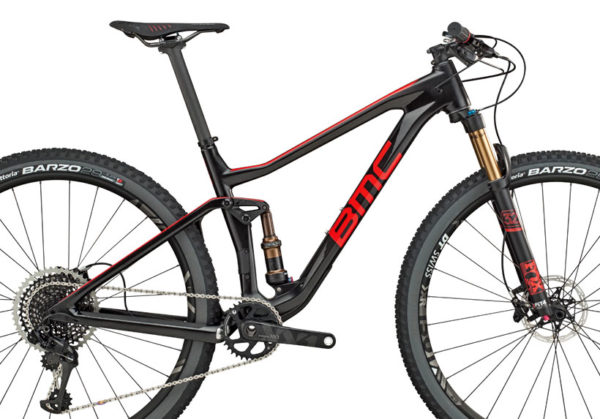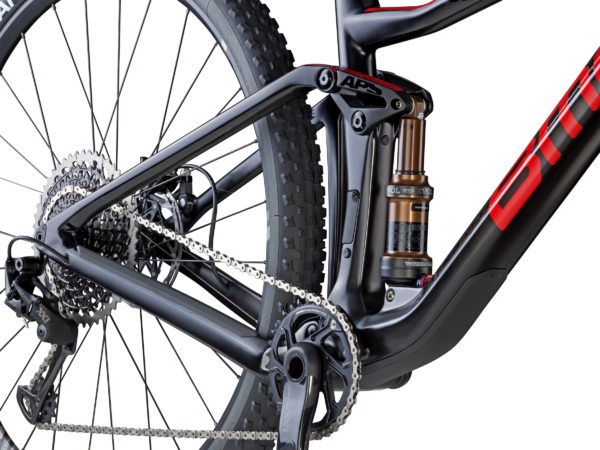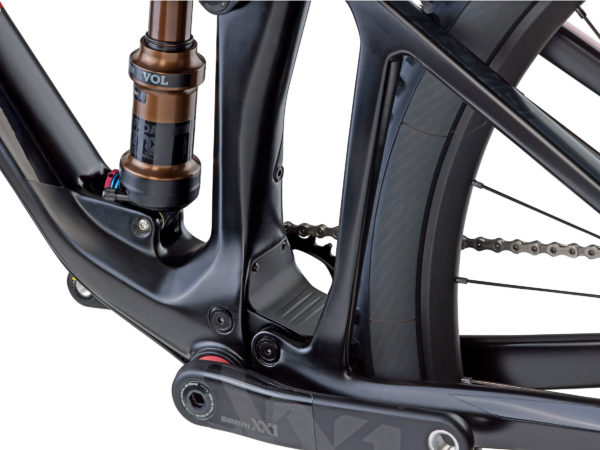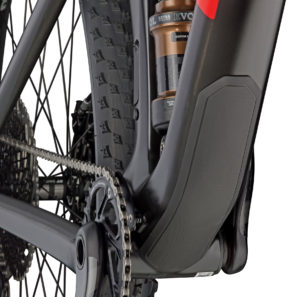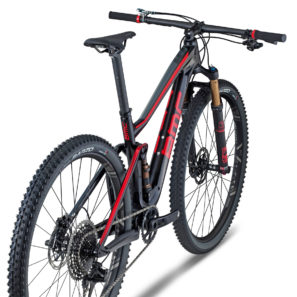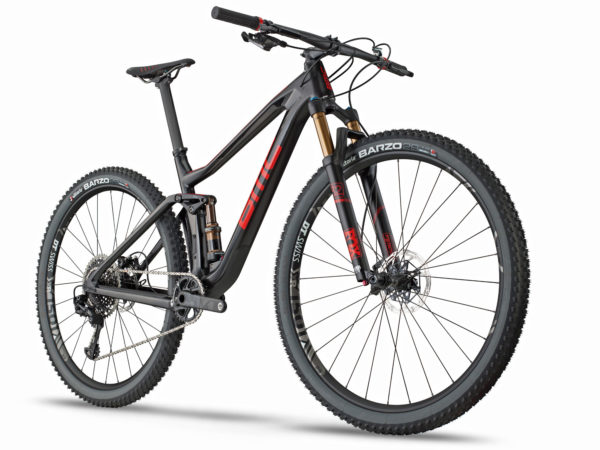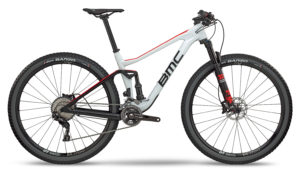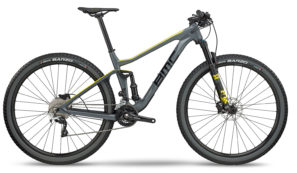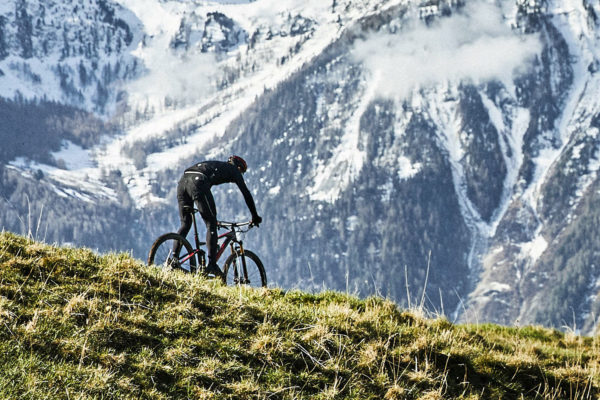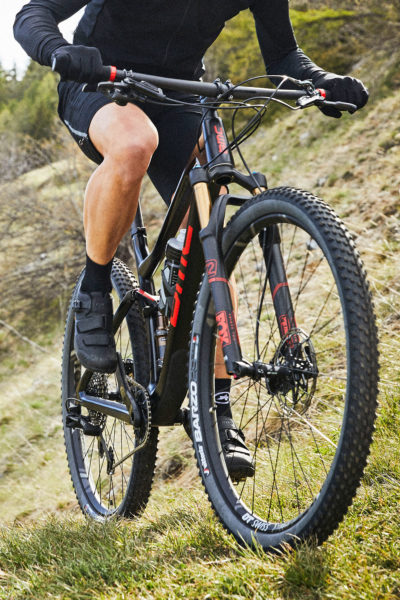BMC continues to evolve the concept of an efficient but capable short travel full-suspension bike being well-suited for much of the riding that most mountain bikers actually do. But building on the success of longer travel trail bike platforms, they have stretched out the short-link APS suspension of their World Cup XC racing Fourstroke for the new 110mm travel Agonist 29er. Developed to still pedal and climb like a race bike, the Agonist gets the slightly more travel and a retuned suspension design for a more compliant ride for endurance level cross-country riding. Geometry of the new full carbon marathon XC bike also gets updated for improved control & confidence on more technical trails, while the Agonist also gets a few tweaks to make it just an easier bike to keep running smoothly through all conditions. Take a closer look at the new bike ready for all day racing or singletrack adventures in your backyard…
BMC says the Agonist is built on a Big Wheel Concept, which essentially is just to say that it benefits from everything we know of 29ers – efficient at carrying speed, improved rollover on obstacles, and stable handling. With 110mm of rear wheel travel, BMC still classifies the new Agonist as a cross-country race bike, but built for the longer style of racing that sees you in the saddle for many hours, with clearance for up to a 58mm/2.3″ tire (with 6mm of frame clearance.) With endurance or marathon racing at heart, the bike gives up just a little bit of pedaling efficiency to their XCO-focused Fourstroke in favor of significantly improved small bump compliance, and with it all-day comfort. The Agonist also gets a more linear spring rate to give riders a better sense of using all of the bike’s travel.
The Agonist gets a small geometry tweak that BMC feels really optimizes it for longer days of singletrack or endurance racing. Compared to the Fourstroke again (which is their XC benchmark), the Agonist gets a 1° slackened headtube to 69°. The bike also a good bit length in the front for a long front-center (or frame reach), again following the similar longer, slacker modern trail geometry movement. The bike also gets a bit lower toptube for improved standover, which helps smaller riders, but is more for improved confidence when riding more technical trails.
The core of the Agonist is an updated & optimized APS suspension design. BMC reworked the lower links to improve stiffness with wide-set main pivots. The updated design also reworks the short link 4-bar design to create that linear feel through the suspension travel for a more fully active feeling while descending. That early small bump compliances and more plush feel through the travel of course gives up some in the way of pedaling efficiency, which is why all of the bike specs include remote lock-out shocks for extended climbing.
BMC put a lot of effort on building integration and durability into the new Agonist. A key issue they identified on the short-link APS design of the Fourstroke was the exposure of the lower link and its main suspension pivots to dirt, water & debris. So the Agonist gets its own integrated mud flap that keeps all of the suspension components protected for improved durability and to just make it generally easier to keep the bike clean. Inside of that hidden link are also some neat internal cable routing guides.
Like we saw on the recent Scott Spark of Nino Schurter, the new Agonist also includes a stealth routing port underneath the lower shock mount to discretely run your remote lockout cables. On Nino’s Scott that meant that he couldn’t yet run a sponsor-correct RockShox Deluxe, which may be one reason we see BMC only spec’ing Fox shocks here. We did see DT shock compatibility with that same frame last year, and have word that RockShox in developing a solution as we type.
The bike also gets large & resilient integrated protection on the downtube and chainstays to protect against regular rock strikes, as well as chain suck & slap. Look close and you also see there is an integrated chain guide plate bolted directly in front of the bottom bracket that appears adjustable for 1x or 2x drivetrains to prevent dropped chains.
Besides protecting the frame itself, the Agonist builds in pretty good modularity and cable integration with fully internal cable routing (inside of internal guide tubes), including the ability to install or remove a high direct mount front derailleur hanger for Sideswing double setups. Even though this bike leans towards more trail use, and we’ve seen more dropper seatposts even on XC race bikes, the Agonist has limited provision for stealth dropper routing. With that said if you have a 1x setup, there will still be an extra cable port in the headtube (even with a remote shock lockout), but getting the routing to work around the bottom bracket might be a chore.
Out back, like the recent road disc offerings that we just saw, the Agonist also takes advantage of Shimano direct mount derailleurs to offer a more secure derailleur attachment (or a standard hanger in the case of SRAM builds.) It is a 12mm rear thru-axle, and gets Boost spacing, which BMC says will be standard for all mountain bikes going forward.
BMC’s new Agonist will be available in two different frame versions, four frame sizes (S-XL), and a number of different complete builds. The top spec Agonist 01 will feature the carbon main frame, carbon rear triangle, and aluminum linkages. It will be available in the $7500 Agonist 01 One top level build with a SRAM XX1 Eagle groupset, Fox Factory suspension, and DT Swiss XR 1501 Spline wheels. The full carbon Agonist o1 should also be available as a frame kit in the future as well (with the frame claiming a weight of 2180g including the shock.)
Additionally BMC has a second version of the bike with an alloy rear end to keep costs down. The Agonist 02 shares the same carbon front triangle and same alloy links, but gets an aluminum rear triangle for a gain of around 350g. The $4900 Agonist 02 One complete bike will come spec’d with a complete new Shimano XT M8000 11 speed double, Fox Performance suspension, and DT M1700 wheels. The $3800 Agonist 02 Two looks to save on drivetrain by going with a mixed Shimano 2×10 drivetrain with an XT M786 rear derailleur, Fox suspension and wheels with Alex rims.
